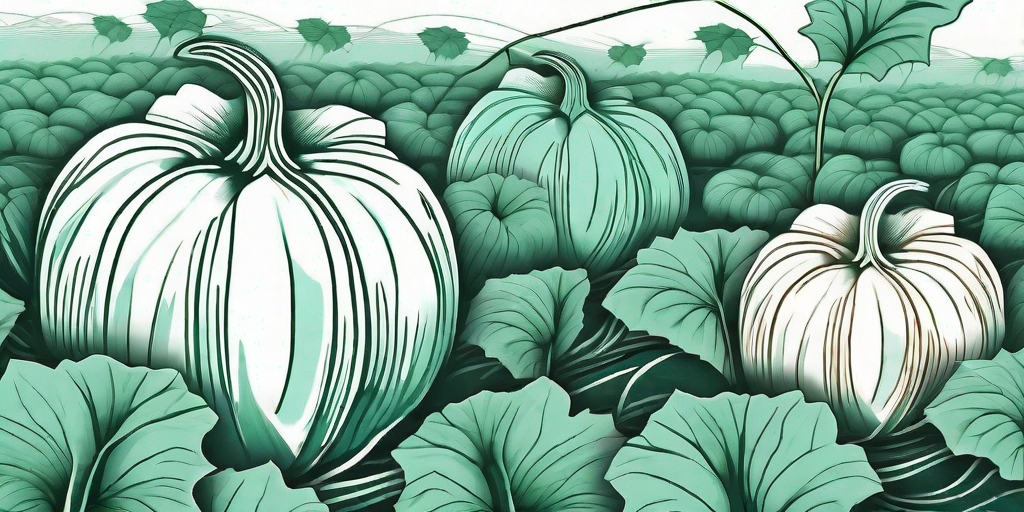
Pumpkins, those beautiful, bulbous, orange globes of autumnal delight, are a staple of the harvest season. But have you ever wondered how to maximize your pumpkin yield? Well, strap in, because we're about to embark on a journey of pumpkin enlightenment, where we'll uncover the secrets of the perfect plant-to-pumpkin ratio and how it can revolutionize your harvest.
The Science of the Plant-to-Pumpkin Ratio
Before we dive into the nitty-gritty, let's get our science goggles on and delve into the theory behind the plant-to-pumpkin ratio. In the simplest terms, this ratio represents the balance between the number of plants and the number of pumpkins you can expect to harvest. Sounds simple, right? But, as with all things in life, it's a bit more complicated than that.
See, not all pumpkin plants are created equal. Some are the overachievers of the pumpkin world, pumping out pumpkins like there's no tomorrow. Others are more laid back, producing just a few pumpkins but of exceptional quality. The trick is finding the right balance between quantity and quality to maximize your yield.
The Overachieving Pumpkin Plant
Let's start with the overachievers. These plants are all about quantity. They produce a lot of pumpkins, but the size and quality of these pumpkins can vary. If you're looking to fill your yard with a sea of orange, these are the plants for you. But beware, they require a lot of care and attention to keep them happy and productive.
The Laid Back Pumpkin Plant
On the other end of the spectrum, we have the laid back pumpkin plants. These plants produce fewer pumpkins, but what they lack in quantity, they make up for in quality. The pumpkins they produce are often larger and of better quality. If you're all about that pumpkin pie, these are the plants for you.
Maximizing Your Yield
Now that we've covered the basics, let's get down to business. How do you maximize your yield using the perfect plant-to-pumpkin ratio? Well, it's a bit of a balancing act, but with a few tips and tricks, you can become a pumpkin harvesting pro.
Firstly, you need to consider your space. If you have a large area to work with, you can afford to plant more of the overachieving pumpkin plants. However, if space is limited, you might want to opt for the laid back pumpkin plants to ensure you get the best quality pumpkins.
Plant Spacing
One of the keys to maximizing your yield is proper plant spacing. Overachieving pumpkin plants need a lot of space to spread out and grow. If they're too close together, they'll compete for resources and you'll end up with a lot of small, underdeveloped pumpkins.
On the other hand, laid back pumpkin plants can be planted closer together. They don't spread out as much, so they won't compete for resources. This means you can plant more of them in a smaller space, increasing your overall yield.
Watering and Fertilizing
Watering and fertilizing are also crucial to maximizing your yield. Both types of plants need plenty of water and nutrients to produce high-quality pumpkins. However, overachieving plants need more of both, so be prepared to spend a lot of time watering and fertilizing if you choose to plant these.
Laid back plants, on the other hand, are less demanding. They still need plenty of water and nutrients, but not as much as their overachieving counterparts. This makes them a good choice for those who want a high yield but don't have a lot of time to devote to gardening.
FAQs
What is the ideal plant-to-pumpkin ratio?
The ideal ratio can vary depending on your specific circumstances. However, as a general rule, aim for a ratio of 1:2 or 1:3. This means for every one plant, you should aim to harvest two to three pumpkins.
How much space do I need to grow pumpkins?
Again, this can vary. Overachieving plants need a lot of space, so aim for at least 5-6 feet between plants. Laid back plants can be planted closer together, with about 2-3 feet between plants.
How often should I water and fertilize my pumpkin plants?
Overachieving plants need a lot of water and nutrients, so aim to water and fertilize them every 1-2 days. Laid back plants can be watered and fertilized every 2-3 days.
Conclusion
There you have it, folks! The secrets to maximizing your pumpkin yield with the perfect plant-to-pumpkin ratio. Remember, it's all about balance. Find the right balance between quantity and quality, and you'll be well on your way to a bountiful pumpkin harvest. Happy gardening!











